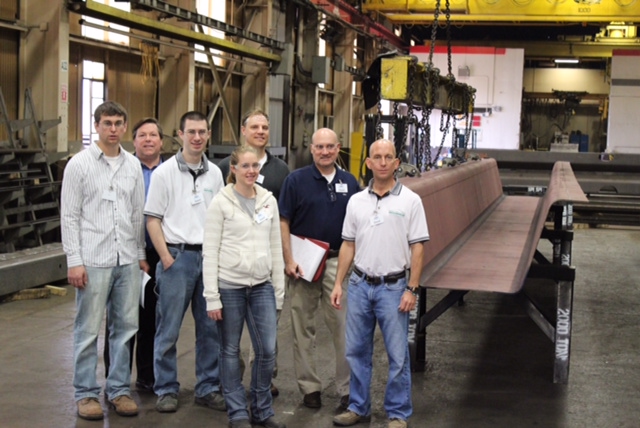In 2013, the American Society of Civil Engineers graded the condition of bridges in the United States at a C+. To combat that rating, a West Virginia University professor is using his experience in the steel bridge industry to improve bridge infrastructure and develop design innovations for the Mountain State.
Karl Barth, Samples Professor of Civil and Environmental Engineering, serves as the technical director for the Short Span Steel Bridge Alliance’s Bridge Technology Center. The Alliance is a group of bridge and buried soil steel structure industry leaders who provide educational information and design tools for the cost-effective design and construction of short span steel bridges in installations up to 140 feet in length.
In 2012, the Alliance launched eSPAN140, a free online tool that provides standardized short span steel bridge designs and connects bridge owners with Alliance member companies that can take the project from design to completion.
By using standardized designs and making available specific contact information for companies that can complete the project, the service provided by eSPAN140 speeds up the time it takes to construct the bridge and cuts down design and construction costs. Barth and a team of 30 experts from the steel and bridge construction industries reviewed more than 3,000 designs over several years during the development phase of eSPAN140.
“What eSPAN140 does is allow county engineers to go online and input some very simple geometric property information and from the standard designs we’ve developed, receive a set of preliminary bridge plans,” explained Barth. “Now they have a way for getting a steel solution on the table in less than five minutes, where before it would have taken several days and additional personnel.
The Short Span Steel Bridge Alliance has worked in conjunction with the Federal Highway Administration to bring this tool to local and state governments, including West Virginia. The focus is on prefabricated bridge elements and systems. Fabricating pieces off-site in a controlled environment usually yields a better product than if they are pieced together in the field.

“With PBES, you’re simply putting components together. This can take a matter of days, as opposed to weeks or months,” said Barth. “We’ve been working with the West Virginia Department of Transportation to develop a program to implement these standards for accelerated bridge construction, which will save taxpayers money and produce a quality infrastructure that is robust, economical and serviceable.”
He estimates that more than 1,000 bridges in West Virginia could be a fit for this technology. Most of these bridges are found on county roads where cars must traverse a small ravine or creek.
Through the West Virginia Division of Highways and the Federal Highway Administration, Barth is also working on projects to research other areas of bridge behavior and expand this technology.
He is leading some of these efforts though WVU, allowing graduate students to participate in groundbreaking research while providing them with practical field experience as well.
“Nobody has fully researched the behavior of these prefabricated bridge elements and systems, so from an academic perspective, there is a whole world of things to explore in structural behavior,” Barth explained. “We’ve had a number of graduate students associated with these projects – from analytical modeling to lab testing, to being out in the field and monitoring bridges. We’re exposing our students to a wide variety of applications in the bridge-building field that they can take with them into the workplace.”